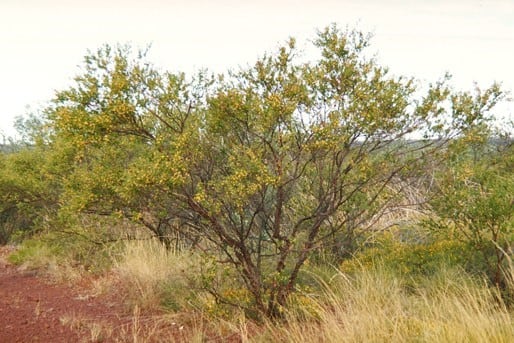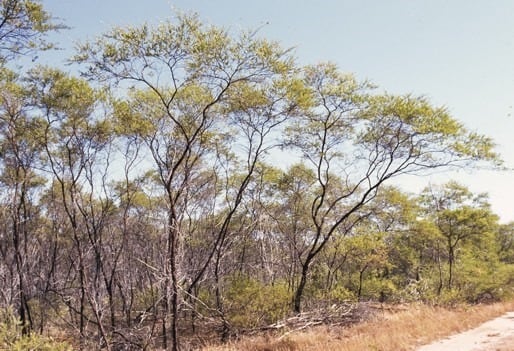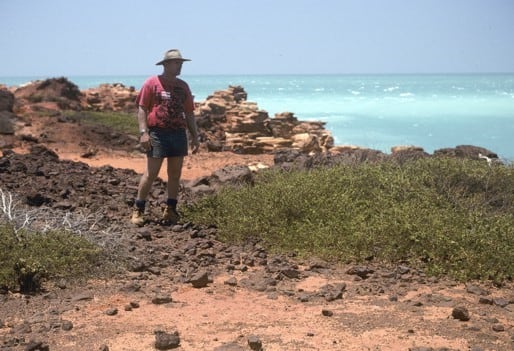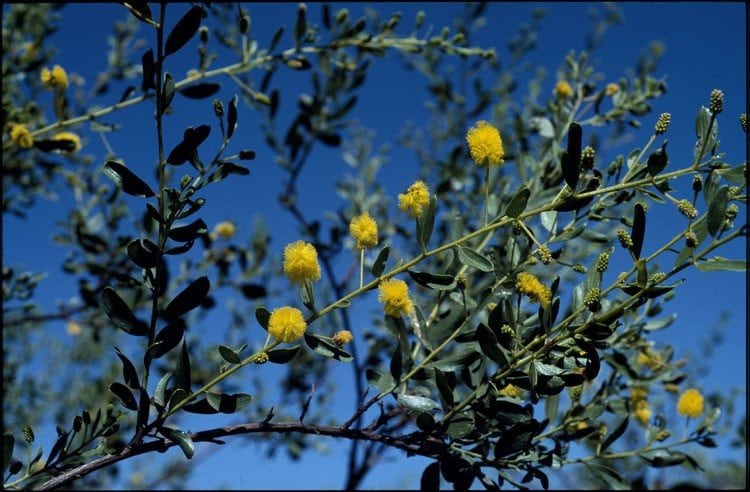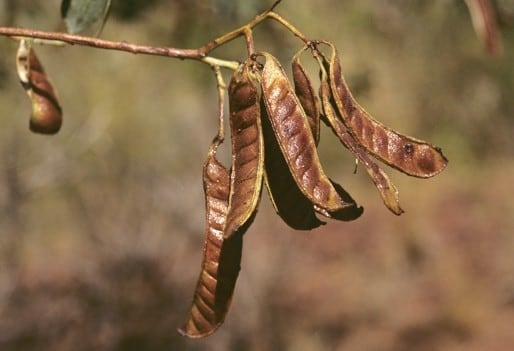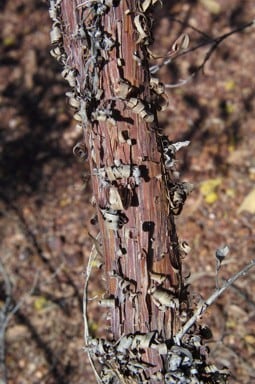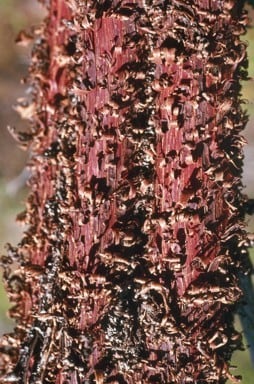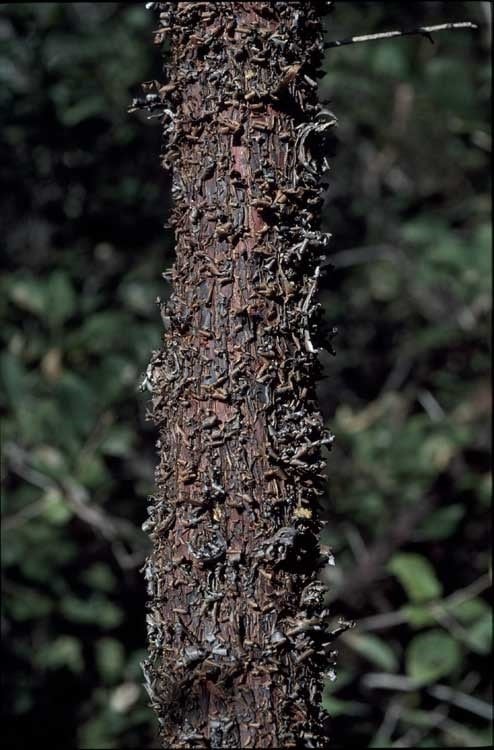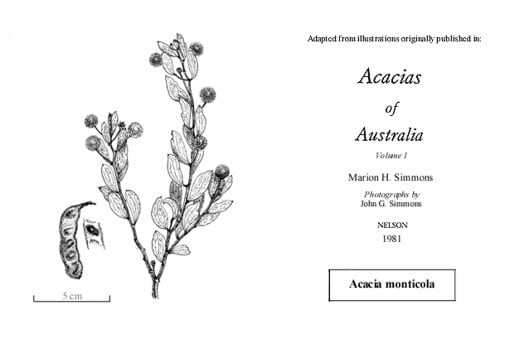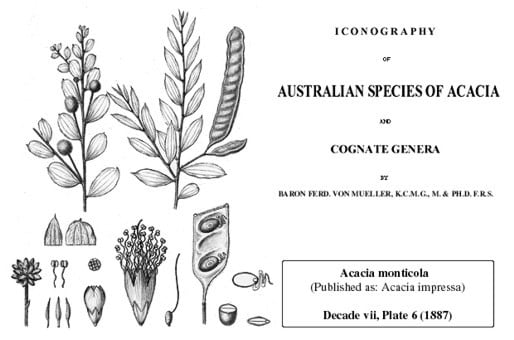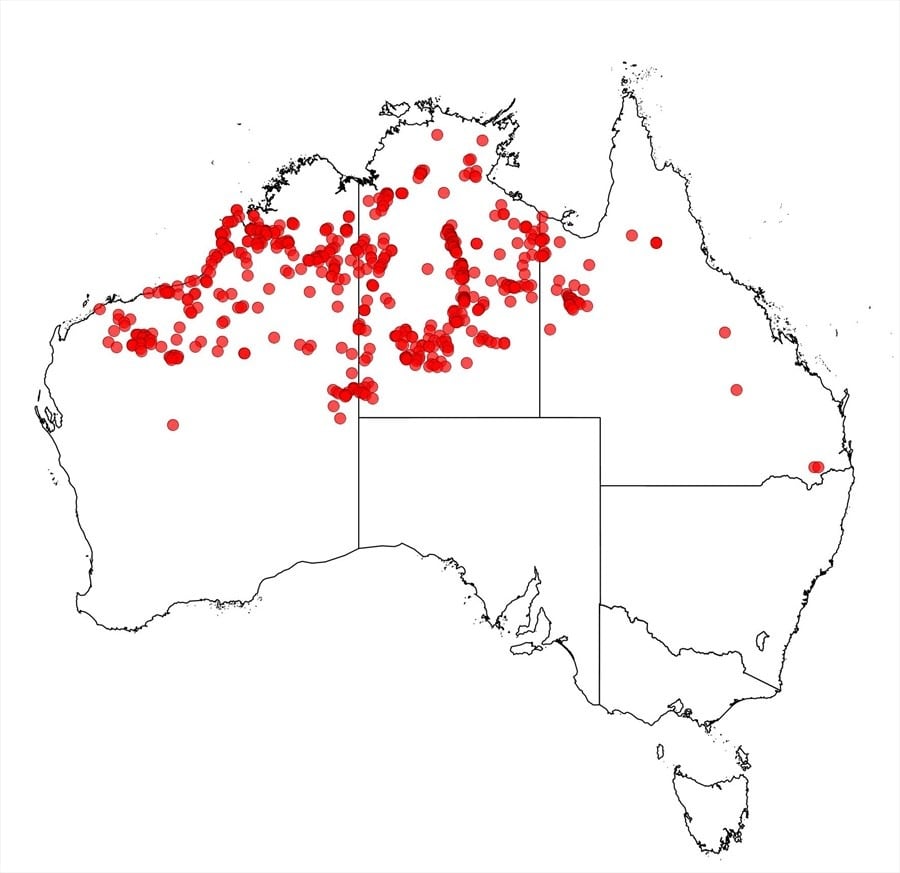Acacia monticola J.M.Black
WATTLE
Acacias of Australia
Common Name
Curley-bark Wattle, Red Wattle, Hill Turpentine
Family
Fabaceae
Distribution
Widespread in northern and north-western Australia, extending from the Pilbara and Kimberley regions of W.A. eastwards through N.T. (between 14ºS and 24ºS) to central western Qld.
Description
Resinous, normally obconic and multi-stemmed shrub or tree 2–5 (–8) m high, rarely prostrate. Bark ‘Minni Ritchi’, dark brownish red aging grey. Branchlets invested with minute, straight, white, patent, fine hairs which are often not apparent to the unaided eye. New shoots bright green and viscid-resinous. Phyllodes elliptic to obovate, slightly asymmetric, (10–) 12–32 (–50) mm long, 5–15 (–20) mm wide, apex rounded-obtuse and mucronulate or rarely acute, green but often white (due to dry resin) over the nerves, indumentum as on branchlets; with 3–5 longitudinal nerves; minor nerves anastomosing to form a fine, open reticulum; gland to 3 mm above pulvinus. Inflorescences simple, heads globular to obloid, spicate to 2.2 cm long, light golden. Flowers 5-merous; calyx 0.6–1.4 mm long, dissected ¼–½ its length; corolla striate, glabrous. Pods narrowly oblong, slightly indented, flat except raised over seeds, 1.8–10 cm long, (7–) 10–15 mm wide, coriaceous, brown, transversely reticulate, indumentum as on branchlets, viscid (especially when young) with the resin sweetly aromatic; margins thickened and yellow. Seeds transverse or slightly oblique, broadly oblong to oblong-elliptic, 4–6.2 mm long, dark brown; areole small, closed, surrounding by a broad pale halo.
Phenology
Flowers Apr.–Aug.
Habitat
Grows mainly on ironstone or sandstone/quartzite in stony skeletal soils, often on rocky ridges or steep slopes, in red sand or sandy loam, in eucalypt woodland, open Acacia shrubland or spinifex communities.
Specimens
W.A.: 18 miles [28.8 km] E of Margaret River Stn, Kimberleys, M.Lazarides 6325 (CANB, NSW); Ganthaume [Gantheaume] Pt area, Broome, P.G.Wilson 882 & R.Rowe (BRI, CANB, NSW, PERTH). N.T.: False Mt Russell, J.R.Maconochie 917 (DNA, NSW). Qld: Lake Moondarra, Mount Isa, R.G.Coveny 478 (NSW); New Highland Plains HS, N.M.Henry 219 (DNA, NSW).
Notes
It is one of the transitional species between the Plurinerves and Juliflorae. It has a ‘Minni Ritchi’ bark as in A. chisholmii, A. lysiphloia and A. trachycarpa with which it hybridises. Examples of A. monticola × A. chisholmii hybrids: Mount Isa, Qld, C.H.Gittins 748 (NSW); L. Moondarra, Qld, R.G.Coveny 476 (NSW). Example of A. monticola × A. lysiphloia hybrid: 3.2 km N of Powell Ck, N.T., J.R.Maconochie 1738 (DNA, NSW). For A. monticola × trachycarpa hybrids see A. monticola × trachycarpa. Acacia monticola also hybridizes with the non ‘Minni Ritchi’ species A. tumida in W.A. (see A. monticola × tumida var. pilbarensis and A. tumida var. tumida) and with A. phlebocarpa in the Burke District, Qld (e.g. R.Booth 5543 & D.T.Kelman, BRI).
On Dampier Peninsula N of Broome, W.A., wind-pruned plants in coastal areas are sometimes prostrate but further inland they attain arborescent stature 6–8 m tall; the latter have acute, longer than normal phyllodes (25–50 mm). Acacia monticola has a striate corolla which is uncommon.
Acacia monticola is relatively fast-growing; it generally reproduces from seed, does not coppice but has the capacity to resprout advantageously after mild fires. Details of its ecology, utilisation, etc. are given in J.W.Turnbull (ed.), Multipurpose Austral. Trees & Shrubs 168 (1986).
FOA Reference
Data derived from Flora of Australia Volumes 11A (2001), 11B (2001) and 12 (1998), products of ABRS, ©Commonwealth of Australia
Author
Dr M.D.Tindale and Dr P.G.Kodela with the assistance of M.Bedward, S.J.Davies, C.Herscovitch, D.A.Keith and/or D.A.Morrison
This identification key and fact sheets are available as a mobile application:
URL: https://apps.lucidcentral.org/wattle/
© Copyright 2018. All rights reserved.
